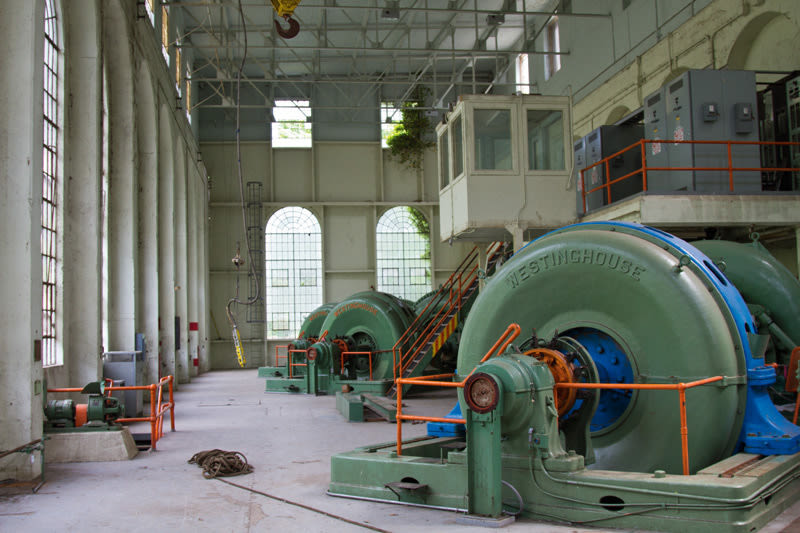Electric Company

Image: Randy Gragg
For almost a century, the Bull Run Powerhouse hummed on the Little Sandy River, not far from Portland’s watershed reserve. The power plant, completed in 1912 along the Bull Run tributary, generated up to 30 megawatts, enough to juice about 12,000 homes. But on a recent stroll among concrete walls more than 60 feet high, as the sun bounced through windows that arch ecclesiastically, the only sound was the river’s rushing water. The plant’s new co-owner, historic preservationist Jeff Joslin, believes the complex stands on the cusp of a new mission: telling the story “of the industrialization and renaturalization of the watershed.”
The plant once epitomized the taming of the rugged Northwest. With the building of the Bull Run water system, a small workers’ town grew. In 1906, the Mt Hood Railway and Power Company built a new line from Boring, a dam, and the new powerhouse, supplied with water by flumes, tunnels, and a reservoir dubbed Roslyn Lake. Soon, absorbed by the company that would become Portland General Electric, the plant powered a streetcar line from Portland to carry workers and recreational fishers.
The town of Bull Run was eventually dismantled. But as late as the ’70s, PGE continued the electrical/recreational tradition, gracing Roslyn Lake with jaunty picnic structures. By 2008, PGE shut down the plant and drained the lake by blasting dams to restore fish habitat.
Fearing for one of the region’s great industrial structures, Joslin partnered with longtime developer Rick Michaelson and investor Karen Karlsson to buy the plant from PGE—along with the weed-filled 115-acre site that used to be Roslyn Lake and the town’s last vestige, its schoolhouse—all for about $615,000. Joslin and Michaelson are two of the city’s most ardent historic preservationists; Joslin ran the city’s landmarks review for 15 years, while Michaelson served even longer on Portland’s Landmarks, Design Review and Planning commissions. At this writing, they are negotiating to sell the Roslyn site and the schoolhouse to Trackers Earth, a wilderness training school, to bankroll their vision for an interpretive site.
The partners hope to help future visitors understand Portland’s intertwined natural and industrial histories. With the air of a kindly priest—or maybe a wizard—Joslin leads visitors through the plant’s sleeping generators. He admits he’s already failed the first test of redevelopment: “Never fall in love with a building.” With a flip of a switch, he sets one motor and many belts to work, spinning lathes, drills, and saws in a scene worthy of the Scorsese film Hugo.
“Preservation is faith-based,” Joslin says. “They’re all projects of passion.”
For details on an open house and the Bull Run Powerhouse’s September centennial celebration, go to savebullrun.org.
